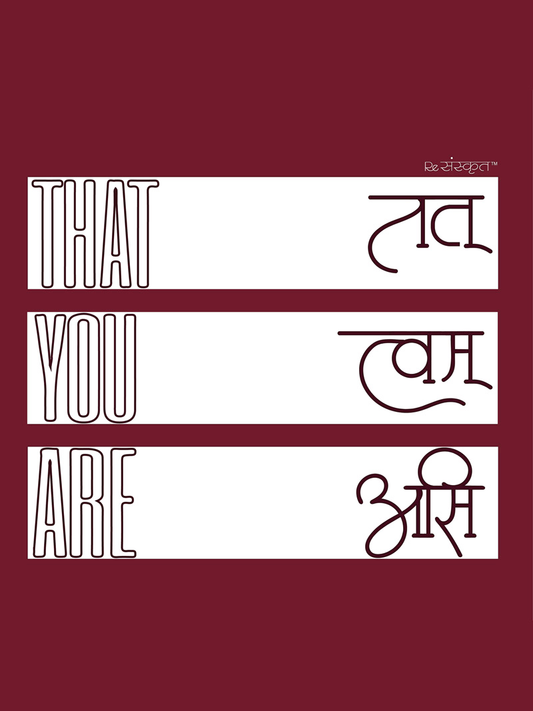The Concept of Infinity – Explained by Bhaskaracharya!

What is Infinity (अनंत)?
Infinity, as we hear this word our brain instantaneously thinks of something very big and enormous which we can’t visualize. And indeed, infinity is limitless (अनंत). Mathematically, it is represented by the symbol ‘ꝏ’, sometimes called as a lemniscate.
If you open Mathematical Books of today, you will find the idea of infinity mentioned in somewhat higher level courses. You won’t, however, find either the infinite or the infinitesimal in an elementary book on algebra, let alone arithmetic! The only thing you may find in an algebra book is a very stern warning about not ever dividing by zero! (Because if you divide any number by zero, you get infinity).
On the other hand, in the algebra books of ancient times in India, we find both the infinite and the infinitesimal treated routinely. One such example is Bhaskaracharya Bijaganita (his book on Algebra) and Lilavati (his book on Arithmetic). Bhaskaracharya was a twelfth-century Indian mathematician and astronomer. He was born in Bijapur in Karnataka.
While Newton and Leibniz have been credited with differential and integral calculus, there is strong evidence to suggest that Bhaskaracharya was a pioneer in some of the principles of differential calculus.
Definition of Inifinity – Bhaskaracharya’s Bijaganita 2.18
In Bijaganita, we find the following shlok
वधादौ वियत् खस्य खं खेन घाते खहारो भवेत् खेन भक्तश्च राशिः॥
vadhādau viyat khasya khaṃ khena ghāte khahāro bhavet khena bhaktaśca rāśiḥ॥
A zero results when multiplied by zero, a “khahara’’ (zero-divided, or infinity) results when a number is divided by zero.
Infinity further explained – Bhaskaracharya’s Bijaganita 2.20

अस्मिन् विकारः खहरे न
राशावपि प्रविष्टेष्वपि निःसृतेषु।
बहुष्वपि स्यात् लय-सृष्टिकाले
अनन्ते अच्युतेभूतगणेषु यद्वत्॥
Transliteration:
asmin vikāraḥ khahare na
rāśāvapi praviṣṭeṣvapi niḥsṛteṣu
bahuṣvapi syāt laya – sṛṣṭikāle
anante acyute bhūtagaṇeṣu yadvat
English Translation:
There is no change in the Khahara (infinity) by adding or subtracting,
just like infinite immutable (Brahma or Viṣnu)
which does not have any effect by the living beings entering or leaving it
at the time of dissolution or creation of the world.
Hindi Translation:
मात्रा को जोड़ने या घटाने से “खहर” (अनंत) में कोई परिवर्तन नहीं होता,
जैसे अनंत अपरिवर्तनीय(ब्रह्म) का ये दुनिया के निर्माण तथा
विघटन के समय जीवित प्राणियों के मृत्यु या जन्म से कोई प्रभाव नहीं पड़ता।
Mr. Avinash Sathaye, has explained this very well in his essay. The mathematical explanation follows as, we write ꝏ to denote the “khahara” i.e. 1/0.
The additional facts about “khahara” can be presented as,
X* ꝏ + Y = X* ꝏ, for any number X and Y. It states that when a “khahara” is added to an ordinary number, then only the “khahara” survives. This is the same as infinity just represented by another name.
In ancient Indian Mathematics, we find Jain texts discussing various such concepts of infinities. These texts are mainly religious or philosophical, but often carry a healthy amount of serious mathematics. They seem to introduce formal concepts of finite or enumerable, innumerable (very large but still finite) and infinite. They even classify multidimensional concepts for infinity.
In Lilavati (Shlok 48), Bhaskaracharya gives more instruction about multiplying by zero
शुन्ये गुणके जाते खं हारश्चेत् पुनस्तदा राशिः।
अविकृत एव ज्ञेयस्तथैव खेनोनितश्च युतः॥
Transliteration:
śunye guṇake jāte khaṃ hāraścet punastadā rāśiḥ।
avikṛta eva jñeyastathaiva khenonitaśca yutaḥ॥
English Translation:
If a zero becomes a multiplier and a number turns into zero, it should (really) be considered as unchanged if it is again divided by zero! Similarly, if a zero is subtracted off and added in (a number is considered unchanged.)
Mention of Inifinity in Ishavasya Upanishad!

ॐ पूर्णमदः पूर्णमिदं पूर्णात् पूर्णमुदच्यते ।
पूर्णस्य पूर्णमादाय पूर्णमेवावशिष्यते ॥
Transliteration:
Om pūrṇamadaḥ pūrṇamidaṃ pūrṇāt pūrṇamudacyate
pūrṇasya pūrṇamādāya pūrṇamevāvaśiṣyate
English Translation:
Om, That is Full, This also is Full, from this Fullness comes that Fullness,
Taking Fullness from Fullness, Fullness Indeed Remains.
Hindi Translation:
ॐ, वह (अज्ञात ब्रह्मांड) पूर्ण है, यह (प्रतीत ब्रह्मांड) पूर्ण है; यह पूर्णता उस पूर्णता से प्राप्त हुई है;
जब यह पूर्णता उस परिपूर्णता से अलग हो जाती है, तो जो भी रहता है वह पूर्णता है.
Conclusion
Infinity is a central concept as far as advanced sciences are concerned, such a great advancement at such complex subject shows how rich and prosperous was our culture. We hope you have understood infinity from both the modern as well as ancient perspective. Please let us know your thoughts on this and if anything you’d like to add.

![[PREORDER] 2026 Hindu Desk Calendar - Sanskrit Shlokas, Art & Tithis - ReSanskrit®](http://resanskrit.com/cdn/shop/files/2026_desk_hero_front_533x.jpg?v=1762577869)
![[PREORDER] 2026 Hindu Desk Calendar - Sanskrit Shlokas, Art & Tithis - ReSanskrit®](http://resanskrit.com/cdn/shop/files/2026_desk_lifestyle_2_533x.jpg?v=1762577869)
![🆕 [PREORDER] 2026 Hindu Wall Calendar - Sanskrit Quotes, Indian Art & Festivals (Vikram Samvat) - ReSanskrit®](http://resanskrit.com/cdn/shop/files/Wall_cover_hero_2026_533x.jpg?v=1762527319)
![🆕 [PREORDER] 2026 Hindu Wall Calendar - Sanskrit Quotes, Indian Art & Festivals (Vikram Samvat) - ReSanskrit®](http://resanskrit.com/cdn/shop/files/Wall_fullpage_month_2_2026_533x.jpg?v=1762528373)
![[New Edition] ReSanskrit® 365 Days of Sanskrit Wisdom | Daily Sanskrit Quotes | With 100+ New Quotes, Hindi & English Translations🆕](http://resanskrit.com/cdn/shop/files/365-calendar-resanskrit-front-hero-shot_533x.jpg?v=1762351171)
![[New Edition] ReSanskrit® 365 Days of Sanskrit Wisdom | Daily Sanskrit Quotes | With 100+ New Quotes, Hindi & English Translations🆕](http://resanskrit.com/cdn/shop/files/365-calendar-resanskrit-quote-shot1_533x.jpg?v=1762351193)








![[Part 2] Relevant Sanskrit Shlokas with Meaning in Hindi & English](http://resanskrit.com/cdn/shop/articles/Relevant-Sanskrit-Shlokas-Article-Cover-image-part-2_8341afb2-9a7c-4b8c-90fa-eb4000af852f_165x.jpg?v=1762527855)


Leave a comment
Please note, comments need to be approved before they are published.